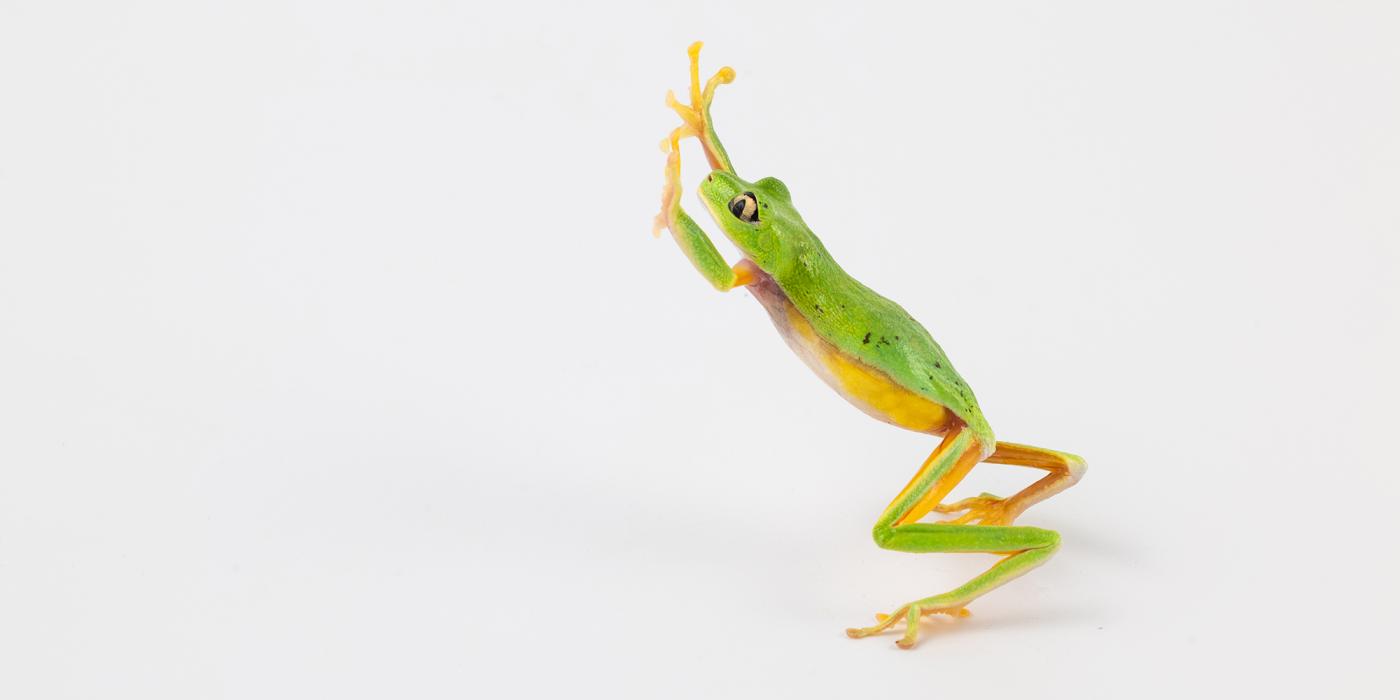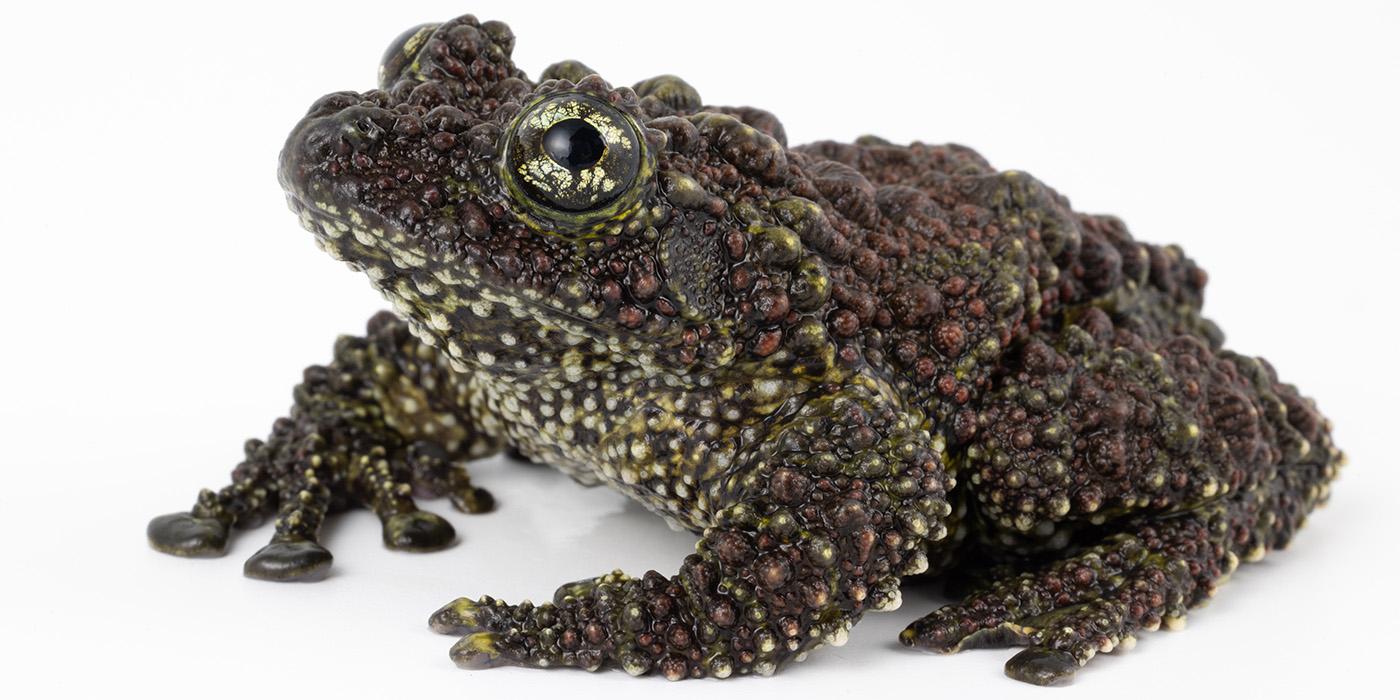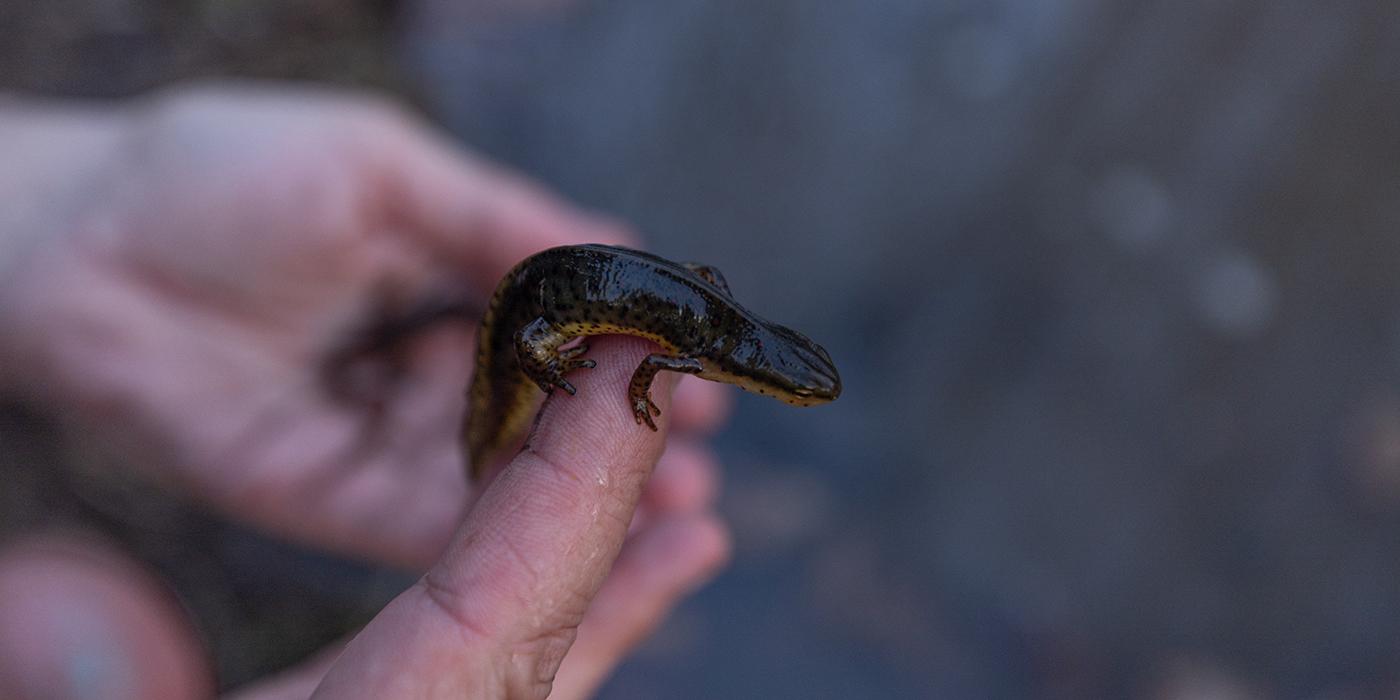Life Finds a Way: Parthenogenesis in Asian Water Dragons
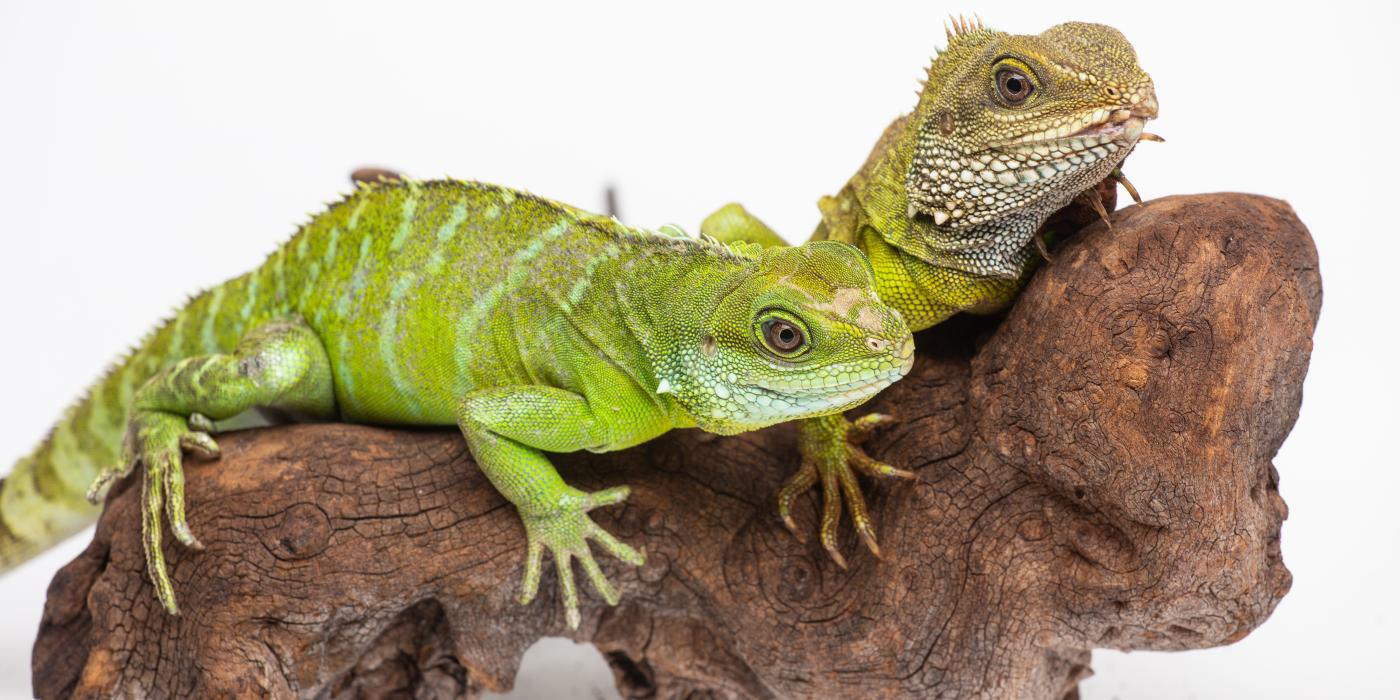
For four years, the Reptile Discovery Center’s Asian water dragon female lived alone. Then, while examining eggs as part of a study, animal keepers made a shocking discovery—one was fertile! How could a female lay a fertile egg without a mate? They turned to the Smithsonian Conservation Biology Institute (SCBI) for an answer to the mystery: parthenogenesis.
Get the details from Reptile Discovery Center keeper Kyle Miller and head of SCBI’s Center for Conservation Genomics Rob Fleischer, who published their findings June 5, 2019, in a PLOS ONE paper entitled, “Parthenogenesis in a captive Asian water dragon (Physignathus cocincinus) identified with novel microsatellites.”
What exactly is parthenogenesis?
Miller: Female Asian water dragons can reproduce sexually or asexually—with or without a male. This is called facultative parthenogenesis, and it comes in handy when an animal is trying to repopulate an area and cannot find a mate.
How exciting is it to be the first to confirm parthenogenesis in Asian water dragons?
Miller: While biologists have documented cases of parthenogenesis in other species of Squamate reptiles (snakes and lizards), the Smithsonian’s National Zoo’s Asian water dragon hatchling is the first-known case of parthenogenesis in this species. These scientific discoveries are always very exciting, and having the opportunity to confirm parthenogenesis at all is really cool!

Life found a way at Smithsonian’s National Zoo, where a female Asian water dragon at the Reptile Discovery Center underwent facultative parthenogenesis—that is, she reproduced and contributed a healthy, thriving offspring to her species despite never breeding with a male or receiving genetic material.
Were you trying to breed the species?
Miller: The funny thing is, we had no intention of breeding our Asian water dragon mom. Rather, we wanted to exhibit her as an ambassador for her species. When she arrived at the Zoo in November 2006 from the St. Louis Zoo, she was only four months old.
Most of the animals that we breed at the Reptile Discovery Center are part of the Association of Zoos and Aquariums’ Species Survival Plan and are considered endangered or critically endangered. Contrast them with Asian water dragons, which are commonly found throughout Thailand, Vietnam, Cambodia, Laos, Myanmar and southern China.
Were you surprised when she laid eggs?
Miller: It was not surprising that she laid eggs, per se, but it was surprising that they were fertile given her history of isolation from males. Female water dragons and other members of the Agamid family have been documented laying infertile eggs if they have not bred with a male. This is common in several reptile families. Mature female green iguanas, for example, routinely develop follicles and lay eggs every year, even without being exposed to a male.
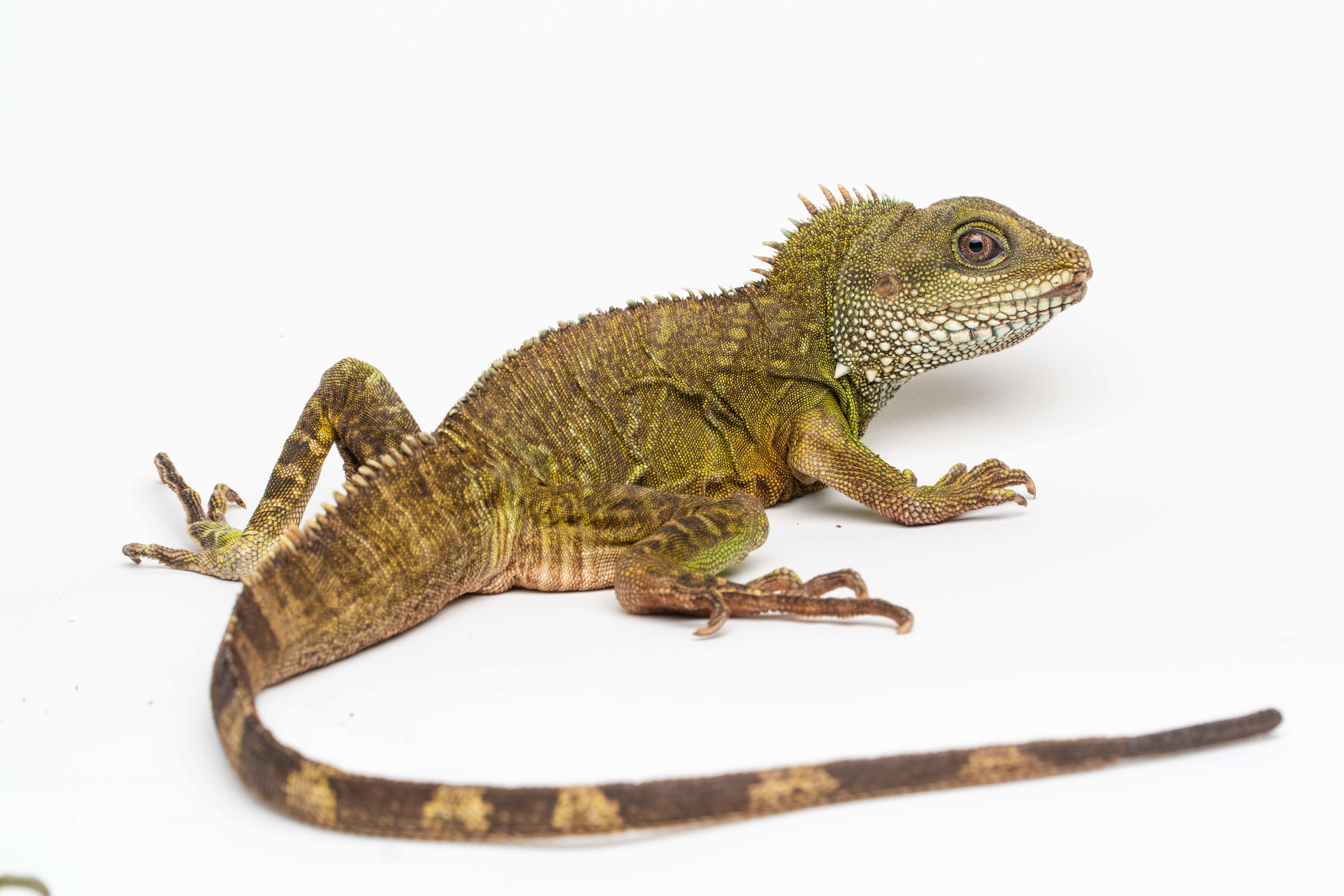
The mother Asian water dragon came to the Zoo in November 2006 from the St. Louis Zoo when she was four months old.
When did you discover that her eggs were fertile?
Miller: Since 2009, the Zoo’s water dragon has consistently produced eggs every year. However, it is protocol for us to discard eggs that are infertile. My colleague, Lauren Augustine, was a keeper here at that time and requested to incubate all eggs laid from female reptiles that were not bred to explore fertility via sperm storage or parthenogenesis.
After two weeks of incubation, Reptile Discovery Center keepers candled the eggs; that is, they held them up to a light. The candling process revealed veins—a tell-tale that the eggs were fertile and the embryos were developing. After looking through our Asian water dragon’s records, I immediately suspected parthenogenesis. Before reaching sexual maturity, she was housed either by herself or with other females.
For Asian water dragons, the average incubation is about 60 days, though it can be a little shorter or longer depending on the incubation temperature. The embryos in the first two clutches did not survive, but they were fully developed inside the eggs. We transferred the embryos to our Genomics Lab, where they took samples of the tissue and blood to determine if parthenogenesis had occurred.
We had a major breakthrough Aug. 24, 2016 when one of the hatchlings pipped. They only weigh about four grams when they hatch—the equivalent of four paperclips. We took a DNA swab from inside her cheek and sent that to our Genomics Lab for testing as well.
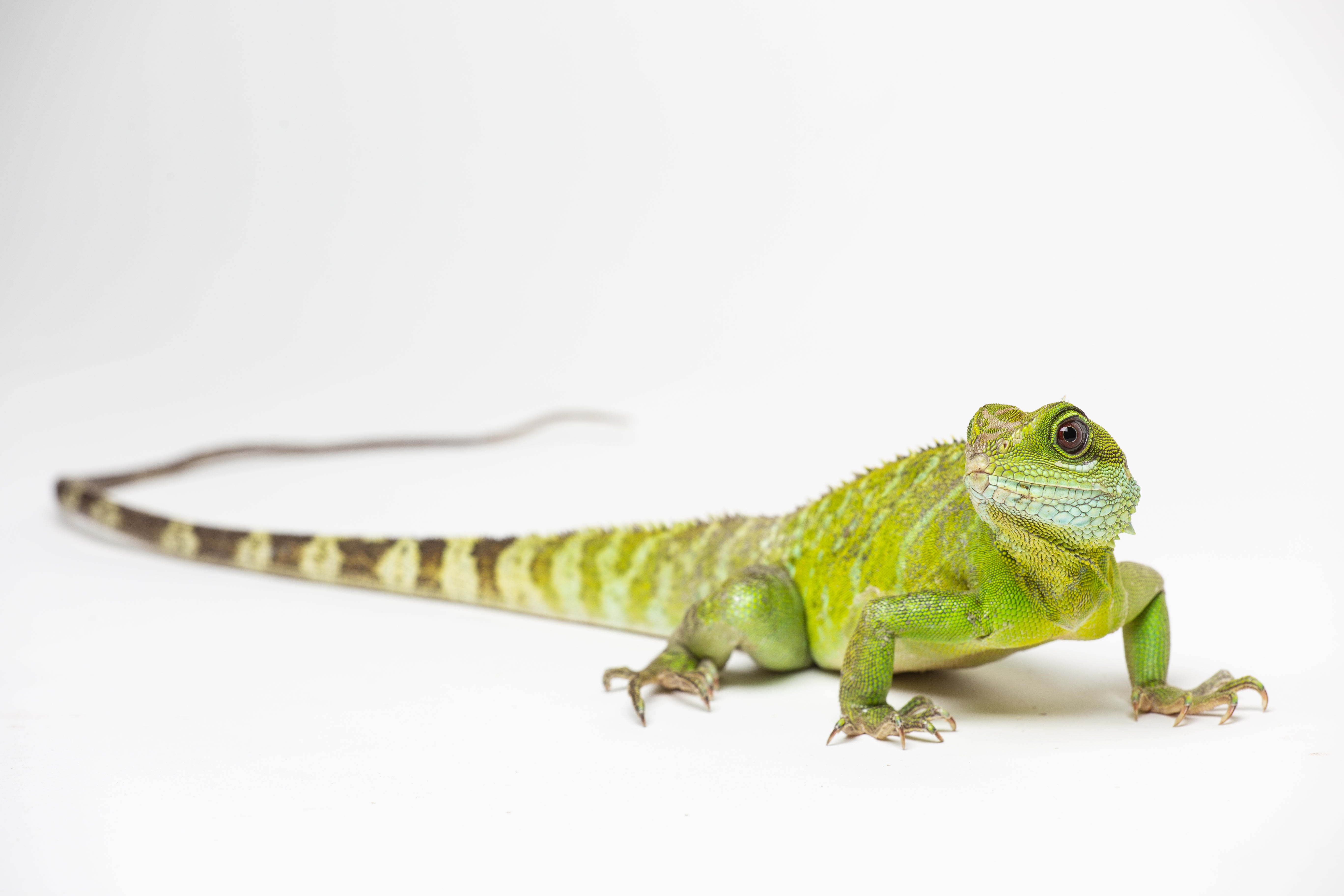
A female hatchling emerged from her shell Aug. 24, 2016. Zoo visitors can see the 2-year-old female on exhibit at the Reptile Discovery Center.
How did you confirm parthenogenesis?
Fleischer: The question we wanted to confirm was whether the Asian water dragon’s offspring had genetic material from only one parent (the mom who laid the egg) or two parents (her and a mystery male). To do this, we obtained a DNA sample from mom and sequenced a part of her genome. Then, we searched the millions of DNA sequences that were generated, looking for microsatellite marker genes—repetitions in DNA that we could use to determine the relatedness between our mom-offspring pair.
We had tens of thousands of microsatellites to choose from, but we ended up selecting 14 for our analysis. Of those, six had two different gene copies (called alleles) in the mom, and so they were useful for this purpose.
Originally, we had tried 17 microsatellite marker genes developed for an Australian species of water dragon, but it turned out to be very distantly related to the Asian water dragon and only one proved useful. This first microsatellite looked promising from the beginning. The mother had a 303 allele and a 316 allele, and each offspring had only one allele, and it was either a 303 or 316. In other words, it matched one of the two from the mother. Our team developed new markers to have sufficient statistical power to test the hypothesis of parthenogenesis.
In all of our tests, we found that the daughter only had one allele. If egg and sperm fusion had occurred, the offspring would have two alleles. It was very clear to us that the mother’s eggs were developing directly into offspring without assistance from a male.
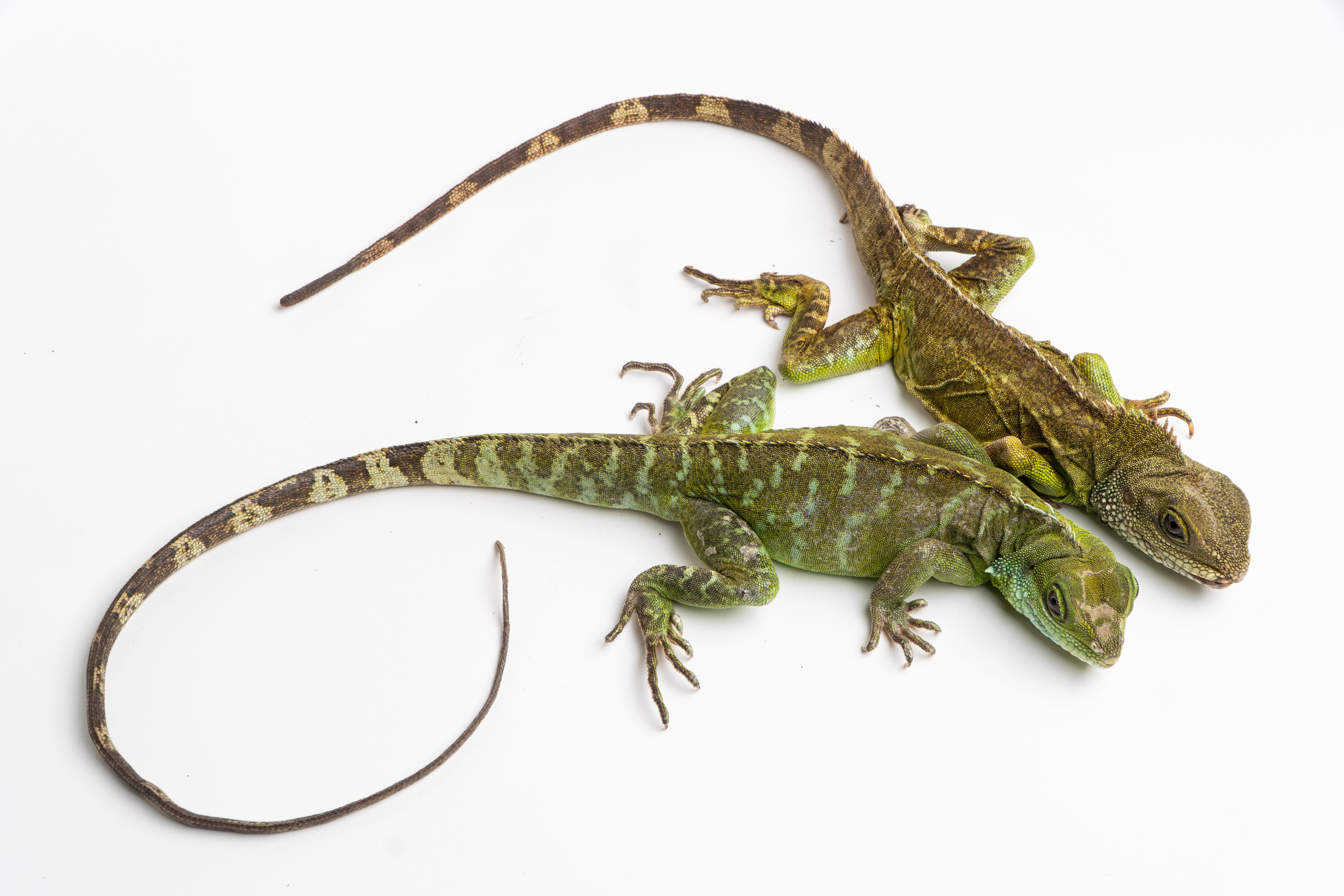
In parthenogenesis, the offspring are not genetically identical to the mother, as they have only one of her two gene copies.
Has she laid other fertile eggs?
Miller: Last fall, the team was so excited when a second Asian water dragon hatched Nov. 21, 2018. Unfortunately, that offspring died June 3 due to a blockage in its gastrointestinal tract. Mom has laid—and continues to lay—clutches that contain fertile eggs; however, most of the embryos do not develop into viable hatchlings.
Fleischer: While we do not know for certain why the fertile eggs have such a low rate of going to full term, we can speculate that because they inherited one copy of every allele from their mom, some of those, by chance, may have been detrimental or lethal.
Every individual carries some mutations that are considered detrimental, including you and me. But, they are usually recessive, so they are only a problem for animals when both alleles have the mutation, or for individuals that are inbred or produce homozygous or hemizygous offspring, such as in parthenogenesis. That expressed recessive allele could cause the animal to die.
Are the offspring genetically identical to their mom?
Fleischer: They would not be identical to mom because the offspring would have only one of her two gene copies. Also, if you were to sequence the genome of both the mother and her offspring, you would find a small number of differences because of rarely occurring mutations.
Miller: There is the possibility of water dragon parthenogens being either female or male. We know the older of the siblings is a female. A necropsy (animal autopsy) will be conducted in the coming weeks, so we will find out whether the 2018 hatchling was a male or female soon.
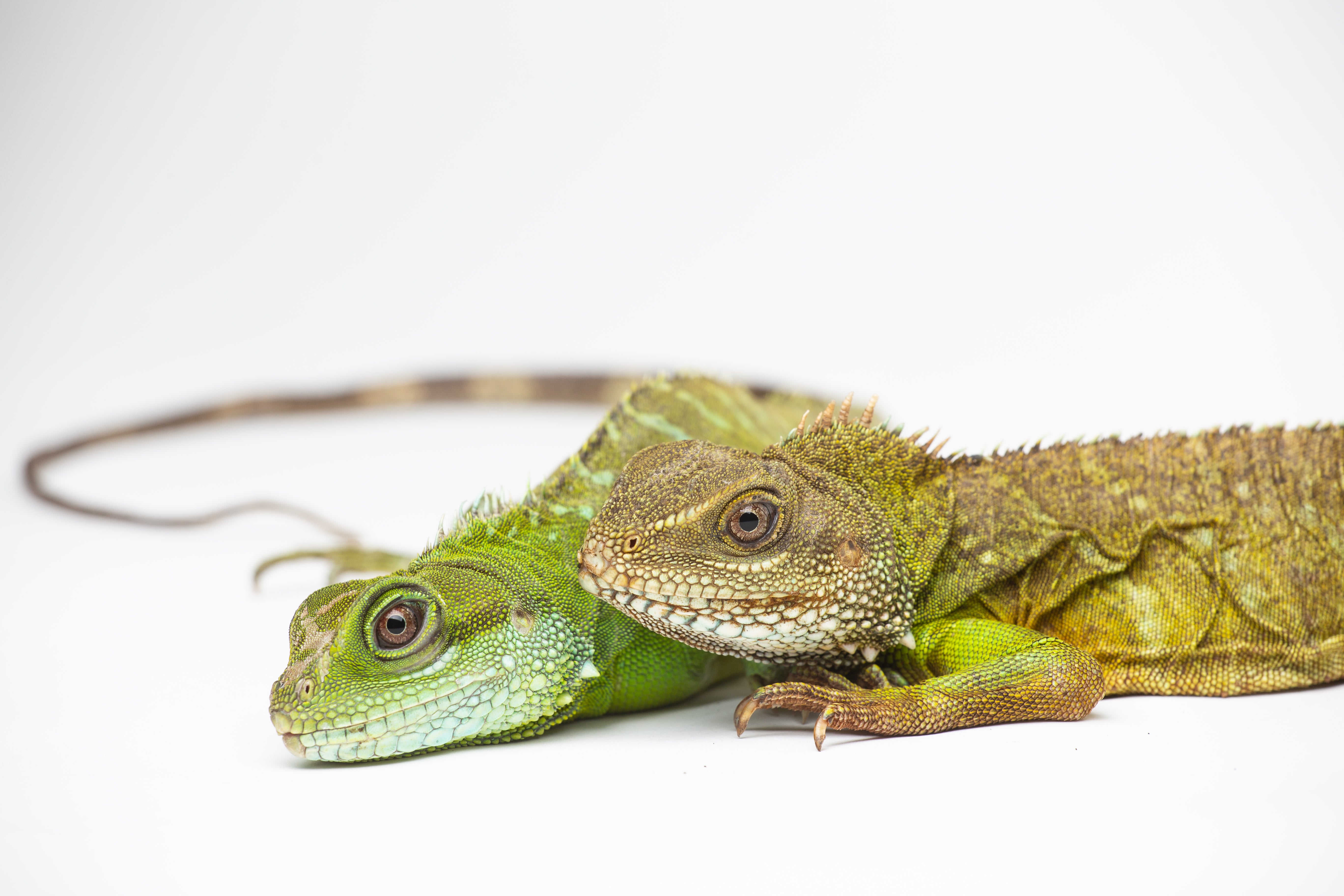
Asian water dragons get their name from one of their defense strategies; these lizards will enter the water and swim away from danger or submerge themselves completely. They can hold their breath for up to 25 minutes.
Will the daughter be able to reproduce, either sexually or via parthenogenesis?
Fleischer: We don’t know! It will be interesting to see if she is able to produce offspring on her own or with a future mate.
Miller: Typically, Asian water dragons do not start producing follicles until they are approximately two-to-three years old. The daughter turns three in August, and she has not laid eggs yet. Without a male present, sometimes they do not lay eggs at all.
What makes you optimistic about this research?
Miller: There is still so much to learn about the natural history of all species. We are just scratching the surface with parthenogenesis in snakes and lizards that primarily reproduce sexually.
Zoo animals offer an opportunity to conduct this type of genetics research, as it would be extremely difficult to assess parthenogenesis in a wild population of Asian water dragons. Thanks to our team at the Center for Conservation Genomics, we are uniquely suited to do these analyses—and advances in technology continue to take research to new heights. Hopefully our work inspires other zoos to pursue these types of projects.
This story appears in the June 2019 issue of National Zoo News. Visit the Reptile Discovery Center to see the Asian water dragon that hatched in 2016!
Reptile Discovery Center keeper Kyle Miller is first author on the PLOS-ONE publication. Additional authors include: Susette Castañeda Rico, Carly R. Muletz-Wolz, Michael G. Campana, Nancy McInerney and Robert C. Fleischer of SCBI’s Center for Conservation Genomics; Alan Peters, curator of the Zoo’s Reptile Discovery Center; Lauren Augustine, curator of herpetology at St. Louis Zoo; and Celine Frere of the GeneCology Research Centre at the University of the Sunshine Coast.
Related Species:

